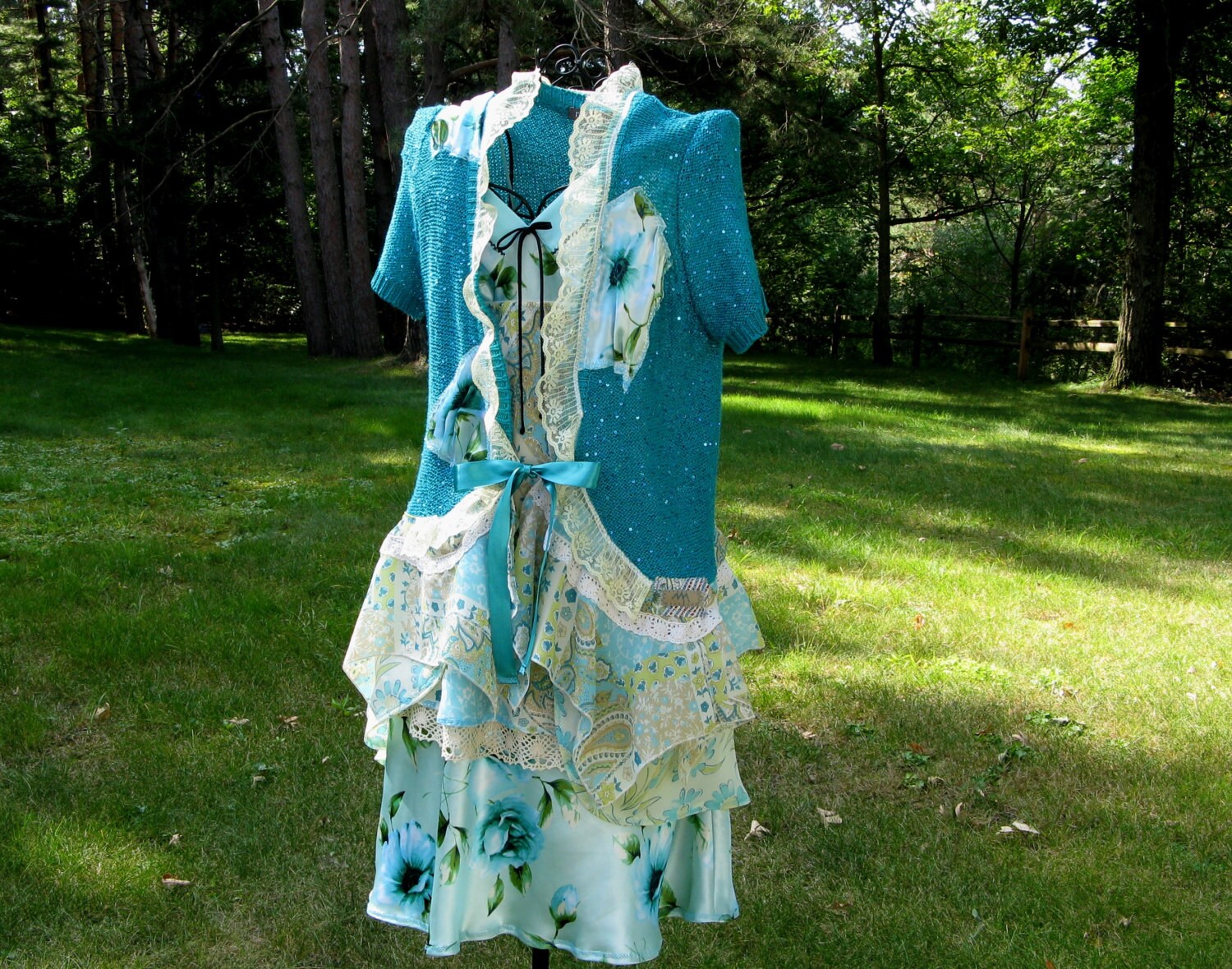Home>How-to Guides>For Women>How To Wash A Slip Dress


For Women
How To Wash A Slip Dress
Modified: August 2, 2023
Learn the best techniques for washing slip dresses for women to keep them looking fresh and fabulous. Follow our step-by-step guide for optimum results.
(Many of the links in this article redirect to a specific reviewed product. Your purchase of these products through affiliate links helps to generate commission for Under-tec.com, at no extra cost. Learn more)
Table of Contents
Introduction
Welcome to our guide on how to wash a slip dress. Slip dresses are versatile and stylish garments that are a staple in many women’s wardrobes. Whether you wear them as a standalone dress or layer them with other clothing items, it’s important to know how to properly care for and clean your slip dress to keep it looking its best.
A slip dress is typically made from delicate materials like silk, satin, or lace, which require special attention when it comes to washing. Improper cleaning methods can lead to damage, shrinkage, or color fading, so it’s essential to follow the correct procedures. In this article, we will provide you with step-by-step instructions on how to wash your slip dress by hand or using a washing machine, as well as tips on drying, ironing, and storing your dress.
Proper care and maintenance of your slip dress not only prolong its lifespan but also preserve its quality and appearance. By following the guidelines outlined in this article, you can ensure that your slip dress remains in excellent condition, always ready to be worn for any occasion. So, let’s dive in and learn how to keep your slip dress looking fresh and fabulous!
Materials Needed
Before you begin the process of washing your slip dress, make sure you have the following materials handy:
- Gentle detergent: Choose a detergent specifically formulated for delicate fabrics to avoid any damage or discoloration.
- Clean basin or sink: You will need a clean basin or sink large enough to accommodate the slip dress and allow it to be submerged in water without overcrowding.
- Cool water: Use cool or lukewarm water for washing your slip dress. Hot water can cause the fabric to shrink or lose its shape.
- Soft-bristle brush or sponge: For removing stains or dirt, have a soft-bristle brush or sponge on hand. Make sure the brush or sponge is clean and doesn’t have any residual soap or harsh bristles that could damage the dress.
- Lint roller or fabric shaver: To remove any lint or pills that may have accumulated on the slip dress, have a lint roller or fabric shaver available.
- Clean towels: You’ll need clean towels for blotting excess water from the dress and protecting your work surface during the drying process.
- Clothesline or drying rack: For air-drying the slip dress, have a clothesline or drying rack available. Make sure it is clean and free from any dirt or debris that could transfer onto the dress.
- Iron and ironing board: If necessary, you may need an iron and ironing board to smooth out any wrinkles or creases in the slip dress.
Having these materials within reach will make the process of washing your slip dress more efficient and ensure that you have everything you need to properly care for your garment.
Preparing the Slip Dress for Washing
Before you start washing your slip dress, it’s essential to check the care label for any specific instructions provided by the manufacturer. This will help you determine the best method and precautions to take. Here are the general steps to prepare your slip dress for washing:
- Spot check for stains: Examine the slip dress for any visible stains or spills. If you notice any, pre-treat them before washing by gently dabbing the area with a stain remover or mild detergent.
- Empty pockets and remove accessories: Make sure to empty any pockets and remove any detachable accessories, such as belts or decorative trims, from the slip dress. This will prevent them from getting tangled or damaged during the washing process.
- Secure closures: Button up or zip up any closures, such as buttons or zippers, to prevent them from snagging or causing damage to the fabric.
- Turn the slip dress inside out: To protect the outer surface and prevent color fading, turn the slip dress inside out before washing. This is especially important for dresses made from delicate materials like silk or satin.
- Secure any straps: If your slip dress has adjustable straps, secure them in place using safety pins or by tying them together. This will prevent them from tangling or getting twisted during the washing process.
By following these steps, you’ll ensure that your slip dress is properly prepared for washing, minimizing the risk of damage and ensuring that it comes out clean and fresh. Taking these precautions will help preserve the lifespan and beauty of your slip dress.
Hand Washing Method
Hand washing your slip dress is often considered the safest and gentlest method for cleaning delicate fabrics. Follow these steps to ensure a thorough yet gentle cleaning:
- Fill a clean basin or sink with cool water: Fill the basin or sink with enough cool water to completely submerge the slip dress. Avoid using hot water, as it can cause the fabric to shrink or lose its shape.
- Add a mild detergent: Add a small amount of gentle detergent specifically formulated for delicate fabrics to the water. Swirl the water gently with your hand to create a soapy solution.
- Submerge the slip dress: Carefully place the slip dress into the water, ensuring that it is fully submerged. Gently swirl it around for a few minutes to allow the detergent to penetrate the fabric and loosen any dirt or grime.
- Spot clean if necessary: If there are any stubborn stains or marks on the slip dress, use a soft-bristle brush or sponge to gently scrub the affected area. Be careful not to scrub too vigorously or use harsh bristles, as this can damage the fabric.
- Rinse the dress: Drain the soapy water and refill the basin or sink with clean, cool water. Submerge the slip dress and gently agitate it to remove any remaining detergent residue.
- Blot excess water: Carefully lift the slip dress out of the water and gently press it against the side of the basin or sink to remove excess water. Avoid wringing or twisting the fabric, as this can cause stretching or damage.
After following these steps, your slip dress should be clean and ready for the drying process. Hand washing is a gentle and effective method for maintaining the delicate fabrics of slip dresses, ensuring that they retain their quality and appearance for a long time.
Machine Washing Method
While hand washing is generally recommended for slip dresses, some fabrics may be suitable for machine washing. Follow these steps to safely machine wash your slip dress:
- Check the care label: Before proceeding, check the care label on your slip dress to see if it is suitable for machine washing. If the label indicates “dry clean only” or “hand wash only,” it’s best to follow those instructions.
- Turn the slip dress inside out: Turning the slip dress inside out before washing can help protect the outer surface and prevent color fading or damage.
- Place the slip dress in a mesh laundry bag: To protect the slip dress from tangling or stretching during the machine wash cycle, place it in a mesh laundry bag. This will help maintain the shape and integrity of the dress.
- Select a gentle cycle: Set your washing machine to a gentle or delicate cycle, with cold water. Avoid using hot water, as it can cause shrinkage or damage to the fabric.
- Add a mild detergent: Add a small amount of gentle detergent specifically formulated for delicate fabrics to the machine. Avoid using bleach or harsh chemicals that can cause discoloration or damage to the dress.
- Start the wash cycle: Once you’ve added the slip dress and detergent, start the machine wash cycle. Allow the cycle to complete, being mindful of any additional rinses or spin cycles that could potentially damage the garment.
- Remove the slip dress promptly: Once the washing cycle is complete, promptly remove the slip dress from the machine to avoid creasing or wrinkling.
It’s important to note that machine washing can be harsher on delicate fabrics than hand washing. Before attempting the machine washing method, ensure that your slip dress is suitable for this type of cleaning. Always follow the instructions on the care label and exercise caution to preserve the quality and longevity of your slip dress.
Drying the Slip Dress
After washing your slip dress, it’s crucial to handle the drying process with care to prevent damage. Here are the recommended methods for drying your slip dress:
- Gently squeeze out excess water: To remove excess water from the slip dress, start by gently squeezing it. Avoid wringing or twisting the fabric, as this can cause stretching or distortion.
- Blot with a clean towel: Lay a clean towel on a flat surface and place the slip dress on top. Gently press the dress against the towel to absorb more moisture. Repeat the process with a dry section of the towel if needed.
- Air dry on a clean surface: Once excess water has been removed, lay the slip dress flat on a clean, breathable surface to air dry. Ensure that the surface is clean and free from dirt or debris that could transfer onto the dress.
- Avoid direct sunlight or heat sources: Place the slip dress away from direct sunlight or heat sources, as these can cause color fading or damage to the fabric. Instead, choose a well-ventilated area with good air circulation to promote faster drying.
- Reshape if necessary: While the slip dress is still damp, gently reshape it to its original silhouette to maintain its shape and prevent wrinkles. Smooth out any wrinkles or creases with your hands or a clean, dry towel.
- Use a drying rack or hanger: If desired, you can use a clothesline or drying rack to hang the slip dress to dry. Ensure that the hanger or rack is suitable for delicate fabrics and won’t leave any marks or indentations on the dress.
- Avoid using a dryer: Unless the care label specifically indicates that machine drying is safe, it’s best to avoid using a dryer for slip dresses. The high heat and tumbling action can damage or shrink the fabric.
By following these drying methods, you’ll preserve the quality and appearance of your slip dress, ensuring it maintains its shape and texture. Air drying is the gentlest and safest way to dry slip dresses made from delicate materials like silk or satin.
Removing Wrinkles and Ironing
After drying, your slip dress may still have some wrinkles or creases. Here’s how you can remove them and achieve a smooth, wrinkle-free look:
- Read the fabric care instructions: Before ironing your slip dress, refer to the fabric care instructions on the label to ensure that it can be safely ironed. Some delicate fabrics may require a lower temperature or need to be ironed with a protective cloth.
- Set the iron to the appropriate temperature: If your slip dress can be ironed, set the iron to the recommended temperature for the fabric type. Use a lower heat setting for delicate materials like silk or satin to avoid scorching the fabric.
- Use a clean ironing board: Ensure that your ironing board is clean and free from any debris or stains that could transfer onto the dress. If needed, cover the ironing board with a clean, thin cloth to provide additional protection.
- Test on an inconspicuous area: Before ironing the entire dress, test a small inconspicuous area to check how the fabric reacts to the heat. This will help you determine if any adjustments need to be made to the iron’s temperature or the ironing technique.
- Begin ironing: Place the slip dress flat on the ironing board and gently smooth out any wrinkles or creases with your hands. Start from the top and work your way down, applying gentle pressure as you glide the iron over the dress in a steady motion.
- Pay attention to details: Take special care when ironing any ruffles, pleats, or decorative elements on the slip dress. Use a lower heat setting and a pressing cloth if necessary to avoid damaging these delicate features.
- Hang or lay flat to cool: Once you’ve finished ironing, allow the slip dress to cool completely before handling or hanging it. Hanging it immediately after ironing can cause wrinkles to reappear due to the weight of the damp fabric.
Remember to take caution when using an iron to avoid injury and damage to the slip dress. If you’re unsure or uncomfortable with ironing, it’s best to seek the assistance of a professional or use alternative methods, such as steaming, to remove wrinkles from your slip dress.
Storing the Slip Dress Correctly
Proper storage is key to maintaining the quality and longevity of your slip dress. Follow these guidelines to ensure your dress stays in excellent condition while being stored:
- Clean before storing: Always make sure your slip dress is clean before storing it. Any oils, perfumes, or stains left on the fabric can attract insects or cause discoloration over time.
- Choose a cool, dry place: Select a cool and dry storage area that is away from direct sunlight and humidity. High heat and moisture can damage the fabric and lead to mold or mildew growth.
- Avoid plastic bags: Never store your slip dress in a plastic bag, as it can trap moisture and result in fabric yellowing or mildew formation. Instead, opt for breathable fabric garment bags or acid-free tissue paper.
- Fold with care: Fold the slip dress gently and avoid placing any heavy items on top of it to prevent creasing or distortion. If the dress has delicate embellishments, use acid-free tissue paper to cushion and protect those areas.
- Rotate the dress: To prevent fabric stretching or fading in specific areas, it’s advisable to rotate the slip dress within your wardrobe. This helps distribute any environmental factors, such as light exposure, more evenly.
- Keep away from pests: Protect your slip dress from insects or pests by using natural deterrents like lavender sachets or cedar balls. These can help keep unwelcome visitors away from your stored garments.
- Regularly check and inspect: Periodically check your stored slip dress to ensure it remains in good condition. Look for any signs of moth or insect damage, and if necessary, take appropriate measures to address the issue.
By following these storage tips, you’ll prolong the lifespan of your slip dress and keep it looking pristine for future wear. Proper storage not only protects the fabric and shape of the dress but also saves you from potential disappointment or fabric damage when you pull it out for your next special occasion.
Additional Tips and Precautions
In addition to the main steps of washing, drying, ironing, and storing your slip dress, here are some additional tips and precautions to keep in mind:
- Test for colorfastness: Before washing your slip dress for the first time, test a small, inconspicuous area for colorfastness. Dampen a cotton swab or cloth with water and gently rub it on a hidden part of the dress to see if any color transfers.
- Avoid harsh chemicals: Refrain from using harsh chemicals, bleach, or stain removers that are not specifically formulated for delicate fabrics. These can damage the fabric and cause discoloration or weakening of the fibers.
- Handle with care: Treat your slip dress gently throughout the washing and drying process. Avoid excessive wringing, twisting, or scrubbing that could damage the delicate fabric or embellishments.
- Seek professional cleaning if needed: If your slip dress is made from a particularly delicate or intricate fabric or has intricate detailing, consider taking it to a professional cleaner who specializes in handling delicate garments.
- Maintain proper storage conditions: Ensure that your storage area is free from pests, such as moths, which can cause damage to your slip dress. Consider using moth deterrents or storing the dress in an airtight container if necessary.
- Avoid hanging for extended periods: While hanging your slip dress temporarily is acceptable, avoid leaving it hanging for an extended period to prevent stretching or deformation of the fabric.
- Follow care instructions: Always refer to the care instructions provided by the manufacturer for the specific fabric of your slip dress. These instructions may vary based on the material and any embellishments.
- Address stains promptly: If your slip dress gets stained, try to address the stain as soon as possible. The longer a stain sits, the more difficult it may be to remove. Refer to stain removal tips specific to the type of stain and fabric.
By following these additional tips and precautions, you can ensure that your slip dress remains in excellent condition and is always ready for you to wear and enjoy. Take these extra measures to preserve the beauty and longevity of your garment.
Conclusion
Knowing how to properly wash and care for your slip dress is essential for maintaining its beauty and longevity. By following the steps outlined in this guide, you can keep your slip dress looking fresh, clean, and fabulous for years to come.
Whether you choose to hand wash or machine wash your slip dress, always check the care label and use gentle detergent suitable for delicate fabrics. Take the necessary precautions, such as turning the dress inside out and securing closures, to prevent damage during the washing process.
Drying your slip dress properly is equally important. Gently squeeze out excess water, blot with a clean towel, and air dry on a clean surface away from direct sunlight or heat sources. Taking the time to properly dry and reshape the dress can ensure that it maintains its original shape and appearance.
When it comes to removing wrinkles and ironing, be careful to select the appropriate temperature and use a clean ironing board. Test a small area before ironing the entire dress, and remember to hang or lay the dress flat to cool before storing or wearing.
Speaking of storing, make sure to clean your slip dress before storage and choose a cool, dry place where it can be protected from pests and excessive humidity. Avoid using plastic bags and instead opt for breathable fabric garment bags or acid-free tissue paper for optimal preservation.
By following these steps and additional tips, you can properly care for your slip dress and ensure that it remains a stylish and timeless piece in your wardrobe collection.
So go ahead, confidently wear your slip dress, knowing that you now have the knowledge to take care of it effectively!










